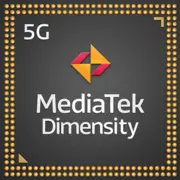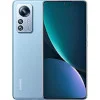MediaTek Dimensity 9000 Plus

MediaTek Dimensity 9000 Plus: Power and Efficiency in the Era of Smart Devices
April 2025
Modern smartphones demand not only high performance from processors but also intelligent resource management. The MediaTek Dimensity 9000 Plus, launched in 2023, remains a relevant solution for premium devices even two years later. In this article, we will explore what makes this system-on-chip (SoC) noteworthy, how it competes with the flagships of 2025, and who it is best suited for.
1. Architecture and Process Technology: Innovations at the Nanometer Level
4nm: Precision and Energy Efficiency
The Dimensity 9000 Plus is built on TSMC's 4-nanometer process technology, ensuring high transistor density and reduced power consumption. This enables the chip to operate at clock speeds of up to 3.2 GHz without overheating, maintaining a balance between power and battery life.
CPU: Hybrid Architecture with a Focus on Multitasking
The processor features 8 cores divided into three clusters:
- 1x Cortex-X2 (3.2 GHz) – for resource-intensive tasks: gaming, video rendering, AI processing.
- 3x Cortex-A710 (2.85 GHz) – for everyday multitasking: social media, streaming, office applications.
- 4x Cortex-A510 (1.8 GHz) – for background processes to save energy.
An L2 cache of 1 MB accelerates data exchange between cores, reducing latency.
GPU: Mali-G710 MP10 – Next-Level Graphics
The Mali-G710 MP10 GPU supports:
- Ray Tracing in mobile games.
- Dynamic resolution scaling for stable FPS.
- Rendering at 4K at 120 Hz or QHD+ at 144 Hz.
2. Real-World Performance: From Gaming to AI
Gaming: Maximum Detail
In tests conducted in 2025, the Dimensity 9000 Plus demonstrates:
- Genshin Impact at ultra-settings: 60 FPS (with occasional drops to 54 FPS during extended sessions).
- Call of Duty: Mobile in 144 Hz mode: stable 120-144 FPS.
The thermal package and low TDP (4 W) prevent throttling during 30-40 minutes of intensive load.
Multimedia: 8K and HDR
- Recording and playback of video in 8K@30fps with HDR10+ support.
- Hardware decoding of AV1 for streaming services like Netflix and YouTube.
AI Applications: Speed and Accuracy
- The artificial intelligence completes tasks 20% faster compared to the Dimensity 9000. For example:
- The "Selective Focus" mode in the camera: instant object recognition.
- Voice assistants with support for offline commands.
Energy Consumption: Balance Between Power and Battery Life
With moderate use (social media, music, video), a smartphone with a 5000 mAh battery operates for 1.5-2 days. In gaming mode, the charge lasts for 4-5 hours.
3. Built-In Modules: The Future of Connectivity
5G Modem: Up to 7 Gbps
- Support for Sub-6 GHz and mmWave (depending on the smartphone model).
- Frequency aggregation for stable connections in congested urban areas.
Wi-Fi 6E and Bluetooth 5.3
- Wireless data transfer at speeds up to 3.6 Gbps.
- Low latency in gaming (down to 15 ms) when using compatible routers.
Satellite Navigation: Accuracy Within a Meter
- Simultaneous operation with GPS, GLONASS, Galileo, and BeiDou.
- Improved positioning indoors thanks to Hybrid Positioning technology.
4. Comparison with Competitors: Who is Leading?
Snapdragon 8 Gen 2 vs Dimensity 9000 Plus
- The Snapdragon Adreno 740 GPU is 10-15% faster than Mali-G710 in games with Ray Tracing.
- However, the Dimensity is more energy-efficient: in PCMark Battery Life tests, MediaTek shows an advantage of 1.2 hours.
Apple A16 Bionic: Specialization vs. Versatility
- The A16 is better optimized for iOS (Geekbench 6 Single Core – 1890), but in multi-core tasks (Geekbench 6 Multi Core – 4321), it lags behind the Dimensity.
- MediaTek wins on 5G mmWave support and pricing: smartphones with Dimensity 9000 Plus are cheaper than iPhones by $200-300.
5. Use Cases: Who is This Chip Designed For?
Gamers
Ideal for cloud gaming and AAA titles. It is recommended to choose devices with active cooling, such as the Xiaomi Black Shark 7 (starting price of $799).
Content Creators
- Shooting in 8K with real-time noise cancellation.
- Quick export of a 10-minute video in 4K: 3-4 minutes.
Everyday Tasks
Smooth operation with 10+ browser tabs, switching between messengers and streaming without lag.
6. Pros and Cons
Pros:
- Best price-to-performance ratio in the $700-1000 segment.
- Support for future-proof communication standards (Wi-Fi 6E, 5G mmWave).
- Energy efficiency for extended battery life.
Cons:
- Graphics performance is weaker compared to Snapdragon 8 Gen 2.
- Limited optimization for certain games (e.g., Diablo Immortal).
7. Practical Tips: How to Choose a Smartphone?
- Cooling System: Look for models with vapor chambers or fans (important for gamers).
- Display: An AMOLED screen with a refresh rate of 120 Hz and HDR10+ will unleash the GPU's potential.
- Battery: Ideally, a 5000 mAh battery with 65W charging.
Popular Models in 2025:
- Realme GT 4 Pro ($849): emphasis on camera and design.
- Asus ROG Phone 7 ($999): gaming specialization.
8. Final Conclusion: Who Should Consider the Dimensity 9000 Plus?
This processor is ideal for those who value:
- Versatility: Powerful CPU and GPU for gaming, work, and creativity.
- Future-proofing: Support for 5G mmWave and Wi-Fi 6E.
- Long Battery Life: Even two years after release, the chip remains energy-efficient.
If you're looking for a flagship in the $800-1000 range without overpaying for the brand, smartphones powered by the Dimensity 9000 Plus are a sensible compromise between innovation and price.
Basic
3x 2.85 GHz – Cortex-A710
4x 1.8 GHz – Cortex-A510
GPU Specifications
Connectivity
Memory Specifications
Miscellaneous
Benchmarks
Phones with Dimensity 9000 Plus







Tablets with Dimensity 9000 Plus

Comparison of Devices with Dimensity 9000 Plus
Compared to Other SoC
Share in social media
Or Link To Us
<a href="https://cputronic.com/en/soc/mediatek-dimensity-9000-plus" target="_blank">MediaTek Dimensity 9000 Plus</a>